 |
Hardware accessories & Care equipment | Mobile phone:+86 13961213735 Whatsapp:+86 13961213735 E-mail:davey@fost.biz |
 |
Hardware accessories & Care equipment | Mobile phone:+86 13961213735 Whatsapp:+86 13961213735 E-mail:davey@fost.biz |
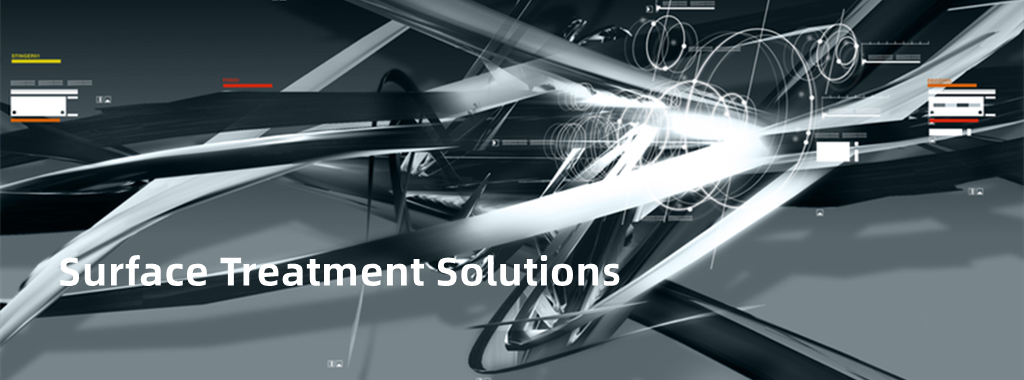
Surface finishing is usually used to improve the corrosion resistance, durability and decorative appearance of parts. We manufacture and supply custom products and provide surface finishing services according to our customers' specifications and industry standards. We are an efficient and cost-effective one-stop solution provider with the scale and capability to provide integrated services.
Electroplating is the process of plating a thin layer of other metals or alloys on some metal surfaces using the principle of electrolysis.
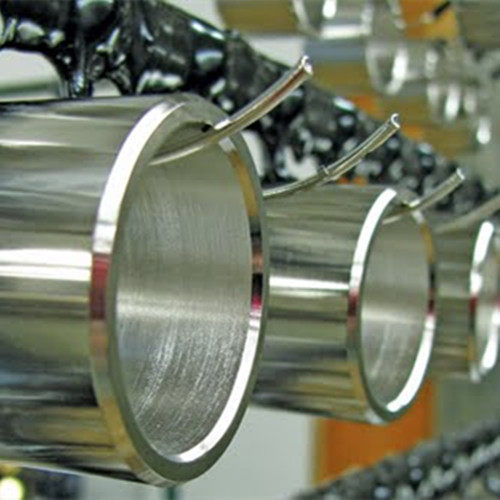
Designed for endurance and wear able to withstand harsh conditions to protect and strengthen machined parts.
| ● Forms a protective barrier | ● Is magnetic |
| ● Enhances appearance | ● Increases hardness |
| ● Reduces friction | ● Absorbs light and energy |
| ● Conducts electricity | ● Promotes adhesion |
| ● Prevents formation of whiskers | ● Prevents tarnishing |
Industrial plating is designed for endurance and wear able to withstand harsh conditions to protect and strengthen machine parts. Most base metals can be plated. Typical metals would include all types of steels, copper alloys and nickel-iron alloys.
Metal plating can give component a fresh look and make them stronger, which extends their lifespans. There are several options when choosing which type of metal plating to go with to create the look and performance. There are 5 common types of plating process on machined parts, Nickel, Chrome, Zinc, Copper and Tin plating.
Nickel plating is popular for household items and gives them a sleek, modern look. Nickel is commonly used on aluminum, stainless steel, and copper items, though it can bond to other metals as well. The process for plating items with nickel is electroless, which makes it a simpler, more environmentally-friendly choice. Nickel is great for table and chair legs. A high phosphorous nickel alloy can increase the strength and rust resistance of the items it's applied to. It is a great alternative to silver.
Chrome plating gives metal a bright silver-toned finish that stands out. It's also a good choice for industrial projects because it reduces the risk of rust and increases the item's resistance to friction. Chrome plating is usually applied through an electroplating process.
Like tin, zinc is available in abundance, which keeps costs lower than some other plating types. Zinc plating gives metal a bluish gray appearance and is common on small metal parts that might be exposed to moisture. Screws, bolts, and other small parts coated in zinc are less likely to rust than many other finishes.
Copper plating is an expensive option that gives metal a bronze-colored hue, though it can also be blackened for an antique or vintage appearance. While copper plating can stand on its own, it's also used as a pre-treatment for other metal plating types, such as nickel and chrome, because it makes it easier for subsequent coatings to stick to the metal. Copper is a great metal for metal frames, car parts and screws.
Tin plating gives metals a silver appearance that has more of a grayish undertone than most silver and nickel finishes. Items coated in tin can have a matte or bright finish. This plating type is an excellent choice for outdoor furniture, metal fencing, and food preparation and serving items due to its excellent rust resistance. Tin is a very common metal, which lowers production costs.
Protects against corrosion, enhances aesthetic qualities, resists scratching and is one of the most durable surface finishes available.The core benefits of anodizing aluminum alloy parts are increased durability and wear resistance.
When the anodizing process forms an aluminum oxide layer on the outside of an aluminum alloy, it greatly increases its wear resistance because aluminum oxide is such a hard material. Applications where anodizing is used for wear resistance include aluminum components that are subjected to constant movement and contact with other materials. Applications of anodized aluminum include coupling bodies, stop flanges and valves.
Dyeing is another popular application of anodized aluminum. The aluminum oxide layer that is created on an aluminum alloy during the anodizing process is porous. This allows some dyes to be absorbed by the oxide layer. Aluminum alloys that couldn't be dyed before can now be made to be a variety of colors.
Applications of dyeing anodized aluminum include knobs and body housings. Since aluminum oxide is not nearly as conductive as aluminum, it can be also used for electrical insulation purposes such as electric car battery terminals and cable pins.
Aluminum is the most commonly anodized material. However, there are several other types of materials that can be anodized. Titanium is perhaps the second most commonly anodized material, though still nowhere near as popular as aluminum.
Anodizing is a method for changing the surface chemistry of metals and other substrates. It protects against corrosion, enhances aesthetic qualities, resists scratching and is one of the most durable surface finishes available. There are 4 common anodizing processes for precision machine parts, Chromic acid anodizing, Sulfuric acid anodizing, Silicon anodizing, Hard anodizing.
Chromic acid anodizing:The coating is formed from a chromic acid bath (chromic acid is obtained through chromite, it is a highly oxidizing and corrosive solid). The final coating is notable for its resistance to corrosion and good paint adhesion.
Sulfuric acid anodizing:This is the most common and most widely used procedure for coloring anodized parts. The transparent layer formed after anodizing gives the material, once painted, a high quality metallic appearance.
Silicon anodizing:When the alloy contains silicon, the resulting layer is more resistant to wear and corrosion despite its greyish, opaque color. This type of anodizing is not used for decoration, but rather for parts that will not be visible.
Hard anodizing:If the part is intended for an environment where it will be most affected by abrasion and corrosion, hard anodizing is usually carried out at low temperature and with the percentages of dissolution reduced to a minimum.
Anodizing is an electrochemical process that converts the metal surface into a decorative, durable, corrosion-resistant, anodic oxide finish.

Heat treating alters the physical properties of metal materials to improve hardness,thoughness,ductility and other mechanical properties.
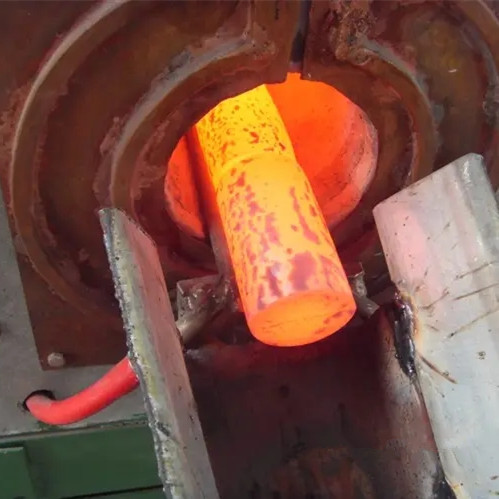
Defines the quality of a product in terms of microstructure, mechanical properties, residual stress and dimensional accuracy.
Hardening and tempering develops the optimum combination of hardness, strength and toughness in engineering steel and offers the component designer a route to savings in weight and material.
Components can be machined or formed in a soft state and then hardened and tempered to a high level of mechanical properties.
Neutral clean hardening is carried out under tightly-controlled conditions to produce a precision component needing the minimum of final finishing. This process applies to components that require surface integrity to be maintained; examples include nuts, bolts, springs, bearings and many automotive parts.
Most heat treatment processes utilize both extreme heat and extreme cold to alter the crystalline microstructure of the material and achieve the desired result.
Almost all engineering steels containing over 0.3% carbon will respond to hardening and tempering. If a metal does not contain the necessary quantity of carbon, then its crystalline structure cannot be broken, and therefore the physical makeup of the steel cannot be altered.
Heat treating can affect a number of different aspects of the metal including strength, hardness, toughness, machinability, formability, ductility, and elasticity. The importance of heat treatment is evident in many precision machined parts in the automotive, aerospace, hydraulic, medical and consumer goods industries, all using heat treatment to improve the properties of materials. There are 5 common types of hardening process on precision machined parts, Hardening, Case hardening, Annealing, Normalizing and Tempering.
In heat treating to harden a metal, the metal is heated to a temperature where the elements in the metal become a solution. Before doing this, defects in the crystal lattice structure of metal are the primary source of ‘give’ or plasticity. Heat treating addresses those deficiencies by bringing the metal into a reliable solution with fine particles to strengthen the metal. Once the metal is thoroughly heated to the right temperature to produce a solid solution, it is quickly quenched to trap the particles in solution. In precipitation hardening, impurity particles are added to the metal alloy to increase strength further.
In the process of case hardening, the external layer of metal is hardened while the interior metal remains soft. For metals with a low carbon content such as iron and steel, additional carbon has to be infused into the surface. Case hardening is a process often used as a final step after the piece has already been machined. High heat is used in combination with other elements and chemicals to produce a hardened outer layer. Because hardening can make metals more brittle, case hardening can be useful for applications that require a flexible metal with a durable wear layer.
Annealing is a heat treatment method where a metal such as aluminum, copper, steel, silver, or brass is heated to a specific temperature, held at that temperature for some time to allow transformation to occur, and then air cooled. This process increases the metal’s ductility and decreases hardness to make the metal more workable. Copper, silver, and brass can be cooled quickly or slowly, whereas ferrous metals like steel must always be cooled gradually to allow annealing to occur. Annealing may be used before a metal is machined to improve its stability, making harder materials less likely to crack or fracture.
Normalizing is an annealing process for steel where it is heated 150-200°F higher than in annealing and held at the critical temperature long enough for the transformation to occur. Steel treated in this way must be air cooled. The heat treating in normalization causes smaller austenitic grains, while air cooling produces more refined ferritic grains. This process improves machinability, ductility, and strength of the steel. Standardization is also useful to remove columnar grains and dendritic segregation that can occur during the casting of a part.
Tempering is a method of heat treating used to increase the resilience of iron-based alloys like steel. Iron-based metals are very hard, but they are often too brittle to be useful for most purposes. Tempering can be used to change the hardness, ductility, and strength of metal, which usually makes it easier to machine. The metal will be heated to a temperature below the critical point as lower temperatures reduce brittleness while maintaining hardness. For increased plasticity with less hardness and strength, higher temperatures are required.
An ink-free process in which a mark, bar code, date, QR code or serial number is affixed to the surface of a machined part.
This process typically use on applying labels such as serial numbers, part numbers or adding logos on components surface. We apply marking on various industries components.
High-end Electronics: For quality assurance with permanent codes and alpha-numeric characters on header, terminals, switches and others.
Automotive industry: The laser marked codes for traceability of automotive components and assemblies.
Aerospace industry: Datamatrix codes on all strategic component parts, such as turbine components.
Medical industry: A machine-readable codes on medical or dental instruments components.
For almost any metals, our fiber laser machines provide readable marks quickly and efficiently. This process ideal for engraving all types of metal surfaces, such as aluminum, steel, stainless steel, brass and other alloys.
Laser marking is often used to implement traceability and identification of components. This makes it possible to track and trace parts from the beginning to the end of the manufacturing process, or even identify which supplier made these components. The most common forms of part identification are data matrix codes, QR codes, and alphanumeric serial numbers. We often apply laser marking on aluminum, steel and stainless steel turned parts.
Since aluminum surfaces have a high thermal conductivity, fiber lasers can mark them at a high temperature and create deep marks in the bare aluminum to ensure that the markings can be read after they’re anodized. AL 6061 is the most common laser marked alloys, but all aluminum types can be marked. Some typical aluminum parts we applied such as flanges, knobs, and more.
Steel is a hard material that requires longer marking times than other metals. However, the marking speed can be increased by creating white marks instead of black ones. White marks contrast well with the bare steel color for most steel types. We can laser mark any steel alloy, including anodized steel, carbon steel and tool steel. Some typical steel parts we applied such as plates, bodies, cap, and more.
Laser marking is most often used to mark stainless steel grades SUS 304 and 316, but it can be used to mark any grade. Some typical stainless steel parts we applied such as: port housing, and other automotive parts.
Laser marking is a low-cost method of adding text, logos, and graphics on component surface. Laser marking is what happens when the beam interacts with the surface of a material, slightly altering its properties or appearance.
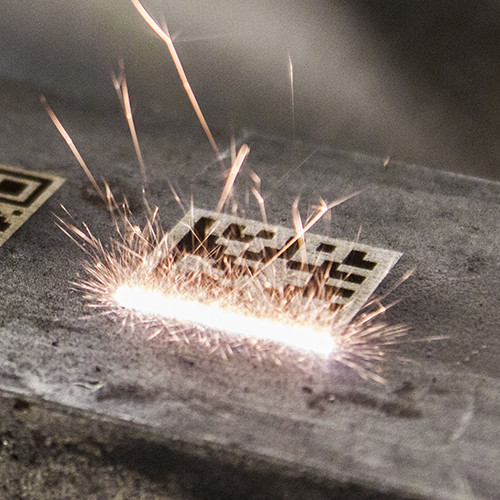
This process removes oil, grease, dirt, loose particles and any other contaminants that may exist on the surface of the material and prepares it for further operations such as electroplating or painting.

Performs component cleaning and polishing services to ensure the appropriate final finish is achieved. Meets the requirements of the various industrial sectors.
Engineering machined parts basically need to be cleaned during the assembly process. Therefore all machined parts will be processed cleaning and tribofinishing before assembly or pack for delivery. The purpose of cleaning parts is to remove all kinds of dirt, such as iron filings, abrasives, oil that remaining on the component surface. Tribofinishing is a process which allows deburring, polishing or shining technical metal parts.
The cleanliness of parts after cleaning will directly affect the assembly quality and the service life of engineering machinery and products, so the cleaning of parts is a very important process for machined parts.
All types of metal such as aluminum, steel, stainless steel, brass and other alloys can be degrease the surface.
As specialists in machined components, we have extensive know-how in the field of tribofinishing and cleaning. This process allows us to clean metal parts to perfection, and reduce burrs present on technical parts after machining. There are 3 main cleaning methods for precision machined parts, Vibration cleaning, Ultrasonic cleaning and Spray wash.
The parts to be cleaned are placed on the cleaning basket or cleaning rack of the vibrating washer and immersed in the cleaning liquid. The vibration of the cleaning machine is used to simulate the manual rinsing action and the chemical action of the cleaning liquid to remove oil stains.
Ultrasound technology that uses high frequencies to produce tiny bubbles that implode upon striking the surface of a part to gently remove debris. It is especially useful for removing tightly-adhered contaminants from intricate items with blind holes, cracks and recesses.
To spray a cleaning fluid with a certain pressure and temperature onto the surface of the parts to remove oil stains. This is particularly true of parts with ID threads, blind holes and cross holes. The high-pressure sprays to mechanically force debris from holes and other hiding places.
For aluminum alloy die castings, we also provide shot blasting, painting, electrophoretic paint, powder spraying, wire drawing and other surface treatment services to meet the corrosion resistance, wear resistance, decorative or other special function requirements of die casting products.
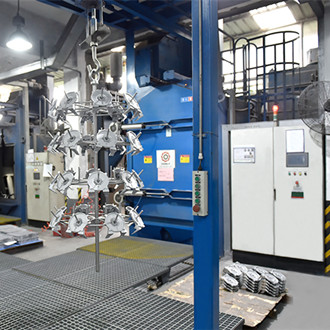 |
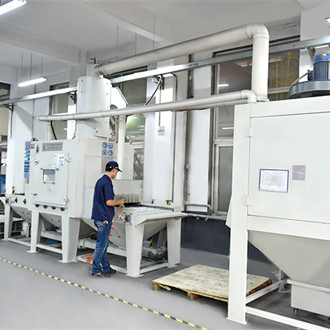 |
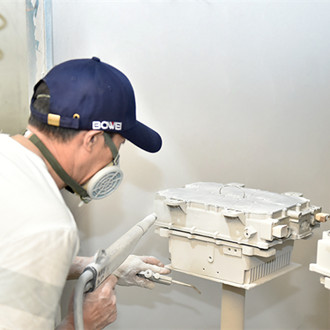 |
Shot Blasting
|
Sand Blasting
|
Painting and Powder Spraying
|
We manufacture and supply customized products and provide surface treatment services according to customers' specifications and industry standards. We are an efficient and cost-effective one-stop solution provider with the scale and capability to deliver integrated services.
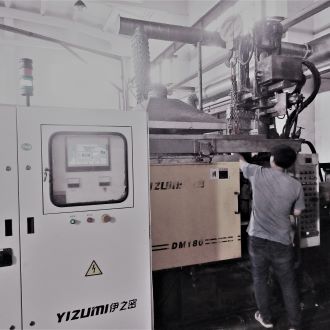 |
 |
 |
Die Casting
|
Stamping
|
Surface Finishing
|
 |
Our goal is to provide every customer with a wide range of capabilities, competitive prices, superior quality and service. |
|
|||||||
|
Saving Your Time and Money |
|||||||||